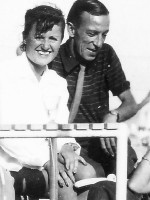Norbert Glanzberg est un Son Français né le 12 octobre 1910 à Rohatyn (Ukraine)
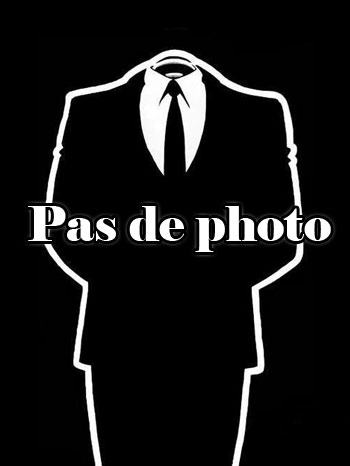
Norbert Glanzberg (October 12, 1910 in Rohatyn, Poland - February 25, 2001 in Paris, France) is a Polish-born French composer. Mostly a composer of film music and songs, he is notable for some famous songs of Édith Piaf.
Hired by the UFA (Universum Film AG) as a composer in 1930, he wrote his first film score for Billy Wilder, and the second for Max Ophüls. When the Nazi regime came into power in Germany in 1933, Joseph Goebbels referred to Glanzberg in the NSDAP newspaper, Der Angriff, as a degenerate Jewish artist. Glanzberg then went into exile in Paris.
In 1936, he met in Paris another exile: Django Reinhardt. Norbert then performed in ball-musette establishments. In 1938, he met Lily Gauty and writed for her Le bonheur est entré dans mon cœur (Das Glück ist mein Herz in getreten). Norbert became musical accompanist for singers performing in fashion collections shows.
In 1939, the Polish refugee Glanzberg was incorporated into the Polish army, stationed in England. In 1940, he was discharged from the army and returned to the south of France in the unoccupied zone, where he met the impresario Felix Marouani who hired him for the concert tours of Tino Rossi and Édith Piaf.
Yet in 1942, after having managed to escape the raids, he is a victim of denunciation and jailed for six months. Actress Marie Bell organizes his escape with the help of a prison guard. Until 1944, he was hidden by Georges Auric and finally by the poet René Laporte at Antibes, where he met intellectual resistants Paul Éluard, Jacques Prévert, Louis Aragon, Elsa Triolet and René Julliard. He introduces Maurice Chevalier to Julliard, who will publish after the war the memoirs of the famed entertainer: Ma route et mes chansons (My way and my songs).
After the Liberation in 1945, Norbert is free again. He helps in the release of Maurice Chevalier, who is kept in custody by a resistance movement. From 1946 to 1948 he tours with Charles Trenet in South America, followed by an international tour with Tino Rossi.
In 1948, Édith Piaf sings Padam Padam, a song he wrote with Henri Contet, and in 1952 Yves Montand performs Moi j’m’en fous et Les grands boulevards.
From 1953, Glanzberg composed many film scores, especially for Michel Strogoff with Curd Jürgens and, in 1954, for La Goualeuse. Édith Piaf makes a huge success of his song Mon manège à moi.
In 1955, he composed the music for the film La sorcière, with Marina Vlady, and the next year the score for La mariée est trop belle, featuring Brigitte Bardot.
In 1983, Glanzberg goes back to classical music and composes a series of lieder from a collection of poems written during the war by prisoners, La mort est un maître de l’Allemagne (der Tod ist ein ... Meister aus Deutschland), the chorus of what is perhaps the greatest poem by Paul Celan, Todesfuge (Death Fugue). He puts into music, in two cycles each of ten works, songs from Berlin and romantic leader classics. In 1985, he writes a concerto for two pianos, La suite yiddish, inspired from the novels of Isaac Bashevis Singer. This work will be arranged for a symphonic orchestra by his friend, the composer and conductor Frédéric Chaslin.
 (1960)
(1960)
(Compositeur de musique originale)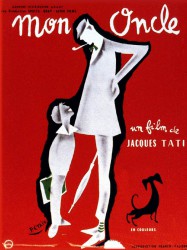 (1958)
(1958)
(Compositeur de musique originale)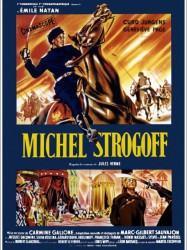 (1956)
(1956)
(Compositeur de musique originale) (1959)
(1959)
(Compositeur de musique originale)
Source : Wikidata
Norbert Glanzberg

- Infos
- Photos
- Meilleurs films
- Famille
- Personnages
- Récompenses
Nationalité France
Naissance 12 octobre 1910 à Rohatyn (Ukraine)
Mort 25 février 2001 (à 90 ans) à Neuilly-sur-Seine (France)
Naissance 12 octobre 1910 à Rohatyn (Ukraine)
Mort 25 février 2001 (à 90 ans) à Neuilly-sur-Seine (France)
Biographie
Norbert Glanzberg was born from Jewish parents in Rohatyn in Galicia in the dual Austro-Hungarian Royal and Imperial Monarchy. In 1911, his family moved to Würzburg in Bavaria, where Norbert received his first harmonica from his mother, which gave rise to the question: "Why does music laugh, why does music cry?" He entered the Conservatory of Würzburg in 1922, already a passionate, and he was appointed as assistant conductor of Aix-la-Chapelle in 1929, where he would meet Béla Bartók and Alban Berg.Hired by the UFA (Universum Film AG) as a composer in 1930, he wrote his first film score for Billy Wilder, and the second for Max Ophüls. When the Nazi regime came into power in Germany in 1933, Joseph Goebbels referred to Glanzberg in the NSDAP newspaper, Der Angriff, as a degenerate Jewish artist. Glanzberg then went into exile in Paris.
In 1936, he met in Paris another exile: Django Reinhardt. Norbert then performed in ball-musette establishments. In 1938, he met Lily Gauty and writed for her Le bonheur est entré dans mon cœur (Das Glück ist mein Herz in getreten). Norbert became musical accompanist for singers performing in fashion collections shows.
In 1939, the Polish refugee Glanzberg was incorporated into the Polish army, stationed in England. In 1940, he was discharged from the army and returned to the south of France in the unoccupied zone, where he met the impresario Felix Marouani who hired him for the concert tours of Tino Rossi and Édith Piaf.
Yet in 1942, after having managed to escape the raids, he is a victim of denunciation and jailed for six months. Actress Marie Bell organizes his escape with the help of a prison guard. Until 1944, he was hidden by Georges Auric and finally by the poet René Laporte at Antibes, where he met intellectual resistants Paul Éluard, Jacques Prévert, Louis Aragon, Elsa Triolet and René Julliard. He introduces Maurice Chevalier to Julliard, who will publish after the war the memoirs of the famed entertainer: Ma route et mes chansons (My way and my songs).
After the Liberation in 1945, Norbert is free again. He helps in the release of Maurice Chevalier, who is kept in custody by a resistance movement. From 1946 to 1948 he tours with Charles Trenet in South America, followed by an international tour with Tino Rossi.
In 1948, Édith Piaf sings Padam Padam, a song he wrote with Henri Contet, and in 1952 Yves Montand performs Moi j’m’en fous et Les grands boulevards.
From 1953, Glanzberg composed many film scores, especially for Michel Strogoff with Curd Jürgens and, in 1954, for La Goualeuse. Édith Piaf makes a huge success of his song Mon manège à moi.
In 1955, he composed the music for the film La sorcière, with Marina Vlady, and the next year the score for La mariée est trop belle, featuring Brigitte Bardot.
In 1983, Glanzberg goes back to classical music and composes a series of lieder from a collection of poems written during the war by prisoners, La mort est un maître de l’Allemagne (der Tod ist ein ... Meister aus Deutschland), the chorus of what is perhaps the greatest poem by Paul Celan, Todesfuge (Death Fugue). He puts into music, in two cycles each of ten works, songs from Berlin and romantic leader classics. In 1985, he writes a concerto for two pianos, La suite yiddish, inspired from the novels of Isaac Bashevis Singer. This work will be arranged for a symphonic orchestra by his friend, the composer and conductor Frédéric Chaslin.
Ses meilleurs films
 (1960)
(1960)(Compositeur de musique originale)
 (1958)
(1958)(Compositeur de musique originale)
 (1956)
(1956)(Compositeur de musique originale)
 (1959)
(1959)(Compositeur de musique originale)
Le plus souvent avec
Filmographie de Norbert Glanzberg (26 films)
Son
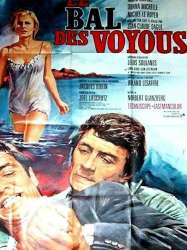
Le bal des voyous (1968)
, 1h26Réalisé par Louis Soulanes
Origine France
Genres Thriller
Acteurs Jean-Claude Bercq, Michel Le Royer, Roland Lesaffre, Linda Veras, Bernadette Stern, Roland Malet
Rôle Musicien
Note56%





Henri Verdier, jeune directeur de banque, a fait la connaissance de Karine, mannequin d'une grande beauté. Robert, qui se dit le frère de Karine, contraint celle-ci a lui présenter Verdier. C'est pour lui proposer une affaire urgente: 50 millions d'apport pour un achat d'uranium qui, sous quelques jours, doit rapporter le double. Aveuglé par la passion, Verdier accepte et "prélève" à sa banque la somme nécessaire. Il ne tarde pas à comprendre qu'il a été berné. Karine n'est pas la soeur de Robert et celui-ci est un truand. Verdier retrouve leur trace.

Une blonde comme ça (1963)
Réalisé par Jean Jabely
Origine France
Genres Comédie, Comédie dramatique, Policier
Acteurs René Lefèvre, Jess Hahn, Noël Roquevert, Tito Alonso, Maurice Teynac, Olivier Mathot
Rôle Compositeur de musique originale
Note53%





Myra, fille du roi du cirque a été enlevée en Amérique du Sud. C'est du moins ce que croit son père. En réalité, Miss Shumway s'est sauvée dans la jungle indienne en compagnie d'un prestidigitateur. Journaliste espiègle et aventureux, Millan retrouve la trace de la jeune femme dans le secteur indien de Tamazunchale. Ils lient connaissance et Myra raconte au jeune homme ce qui l'a poussée à fuir son père. Mais elle n'a plus d'argent et elle prévoit que son aventure va bientôt prendre fin. C'est alors qu'elle rencontre un certain Doc qui lui propose de contacter un vieux sorcier indien...

La Française et l'Amour (1960)
, 2h17Réalisé par Jean-Paul Le Chanois, Christian-Jaque, René Clair, Michel Boisrond, Henri Decoin, Jean Delannoy, Henri Verneuil
Origine France
Genres Drame, Comédie, Comédie dramatique, Film à sketches, Romance
Acteurs Darry Cowl, Sophie Desmarets, Pierre Mondy, Jacqueline Porel, Jean-Paul Belmondo, Alfred Adam
Rôle Compositeur de musique originale
Note61%





Gisèle Bazouche, neuf ans, demande « comment viennent les enfants » à ses parents. Ne sachant que lui répondre, ceux-ci, concierges d’un immeuble parisien, sollicitent l’aide de plusieurs locataires : une prostituée, un colonel et un enseignant.

Les Bateliers de la Volga (1959)
, 1h42Réalisé par Victor Tourjanski
Origine France
Genres Drame, Aventure
Acteurs John Derek, Elsa Martinelli, Dawn Addams, Gert Fröbe, Wolfgang Preiss, Nerio Bernardi
Rôle Compositeur de musique originale
Note54%





La Russie sous le règne d'Alexandre III. Le capitaine Alexej Orlof est dégradé et envoyé dans un bataillon disciplinaire à Donbrovka, en Sibérie pour avoir tenté de venger le viol de sa fiancée par le général Gorew. Il parvient à s'évader et s'enrôle dans l'équipage des bateliers de la Volga.

Mon oncle (1958)
, 1h50Réalisé par Pierre Étaix, Jacques Tati, Henri Marquet
Origine France
Genres Comédie
Thèmes Dystopique
Acteurs Jacques Tati, Jean-Pierre Zola, Adrienne Servantie, Jean-François Martial, Lucien Frégis, Yvonne Arnaud
Rôle Compositeur de musique originale
Note76%





Monsieur Arpel, riche industriel et fier de sa maison futuriste bardée de gadgets technologiques à l'utilité improbable, veut éviter que son beau-frère, M. Hulot, personnage rêveur et bohème, n'influence son fils. Il va essayer de lui confier un emploi dans son usine afin de l'éloigner.
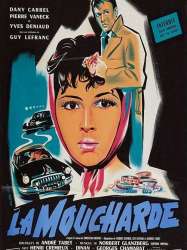
La Moucharde (1958)
, 1h40Réalisé par Guy Lefranc, Bernard Toublanc-Michel
Origine France
Genres Drame, Policier
Acteurs Dany Carrel, Pierre Vaneck, Yves Deniaud, Florence Blot, Georges Chamarat, Maurice Chevit
Rôle Compositeur de musique originale
Note63%





Betty, échappée d'une maison de redressement, accepte de devenir indicatrice pour la police.

Quand vient l'amour (1956)
, 1h32Réalisé par Maurice Cloche
Origine France
Genres Comédie dramatique
Acteurs Mylène Demongeot, Suzet Maïs
Rôle Compositeur de musique originale
Les pensionnaires d’un orphelinat pour jeunes filles se préparent à partir pour une croisière touristique en Yougoslavie. L’une d’entre elles, Jany, qui en est privée pour avoir fait le mur, mais sachant que la directrice ne peut négliger aucune possibilité de filiation, s'invente des racines à Rijeka pour pouvoir quand même y participer. En Yougoslavie, leur guide touristique, Dragan, tombe amoureux de Jany et va l’aider à rechercher ses (faux) ascendants…
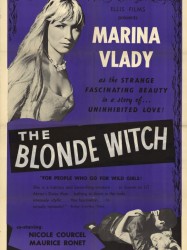
La Sorcière (1956)
, 1h37Réalisé par André Michel
Origine France
Genres Drame, Horreur, Romance
Acteurs Marina Vlady, Maurice Ronet, Nicole Courcel, Michel Etcheverry, Rune Lindström, Erik Hell
Rôle Musicien
Note65%





En Suède, l’ingénieur français Laurent Brulard, exploitant forestier d’une région isolée, connaît des difficultés dans son travail et sa vie quotidienne car il est confronté à un monde de superstitions. Il rencontre cependant le soutien de la propriétaire terrienne Kristina avec laquelle il collabore et qui est amoureuse de lui. Plus par défi que par nécessité, il entreprend de briser des tabous ancestraux en détruisant notamment des rochers vénérés. Alors qu'un jour, égaré dans la forêt, il s'enlisait dans des sables mouvants, Laurent est sauvé par une vieille femme réputée être une sorcière comme Ina, sa petite fille avec qui elle habite. Il tombe sous le charme de la jeune sauvageonne et s’occupe de son éducation, ce qui ne manque pas de rendre Kristina jalouse.

La mariée est trop belle (1956)
, 1h35Réalisé par Pierre Gaspard-Huit, Pierre Lary
Origine France
Genres Comédie, Romance
Acteurs Brigitte Bardot, Micheline Presle, Louis Jourdan, Marcel Amont, Jean-François Calvé, Roger Dumas
Rôle Compositeur de musique originale
Note57%





Flash-back sur le parvis de l’église : Catherine (Brigitte Bardot) raconte ce qui s’est passé auparavant, avant que Judith (Micheline Presle) ne se jette dans les bras de Michel (Louis Jourdan), en lui disant qu’elle est divorcée et que Catherine ne s’évanouisse. Catherine, jeune provinciale, est repérée par Michel, amant de Judith, directrice d’un journal de mode. Elle devient mannequin sous le nom de « Chouchou » et elle forme un couple pour le magazine avec Patrice (Jean-François Calvé), un ex-acteur. Judith décide de marier Catherine et Patrice, faussement, pour faire un coup médiatique. Catherine et les autres vont faire des photographies et filmer le mariage dans le village natal de Catherine. Tout le monde est hébergé chez les tantes de Catherine, qui l’ont élevée. Catherine repousse la demande en mariage de Patrice, qui part dans la nuit. Michel est contraint de prendre la place de Patrice pour faire les photos, réalisées par Toni (Marcel Amont) et Marc (Roger Dumas, en blond !). Catherine s’aperçoit qu’elle aime Michel et elle finit par le lui avouer. Il ne veut pas la croire. Elle va s’offrir à Toni et à Marc, mais il y a des contretemps à chaque fois. Judith a récupéré Patrice et vient annoncer son divorce à Michel, après la fausse cérémonie à l’église (retour au début du film). Michel finit par repousser Judith. Il se marie vraiment avec Catherine. Judith veut qui’ils soient accompagnés par Marc et Toni pendant leur voyage de noces. Michel refuse et part avec Catherine.

Michel Strogoff (1956)
, 1h51Réalisé par Carmine Gallone
Origine France
Genres Drame, Aventure, Historique
Acteurs Curd Jürgens, Geneviève Page, Jacques Dacqmine, Sylva Koscina, Odile Versois, Gérard Buhr
Rôle Compositeur de musique originale
Note60%





Alors que la Sibérie plie l'échine sous l'invasion des Tartares, le capitaine Strogoff, courrier de la garde impériale, est chargé par le Tsar d'avertir son frère qu'un complot se prépare contre lui. Michel Strogoff effectuera aux côtés de Nadia un grand périple...

La Lumière d'en face (1955)
, 1h40Réalisé par Pierre Blondy, Georges Lacombe
Origine France
Genres Drame
Acteurs Raymond Pellegrin, Roger Pigaut, Brigitte Bardot, Jean Debucourt, Claude Romain, Guy Piérauld
Rôle Compositeur de musique originale
Note61%





Georges Marceau est conducteur de poids lourds. Il doit épouser la sensuelle Olivia. Un grave accident le contraint à une vie chaste. En dépit des circonstances et fidèle à sa promesse, Olivia l'épouse. Le couple ouvre un restaurant de routiers. L'infirmité de Georges, la beauté troublante d'Olivia, et la proximité d'autres hommes dont le pompiste Piétri, provoqueront le drame. Psychologiquement fragile, devenant fou de jalousie, Georges blessera Piétri, chez qui Olivia s'était réfugiée, puis se fera renverser par un camion qu'il cherchera à stopper en pensant que c’était celui qui fut le sien. Blessé il s'en sortira et le couple en survivra.
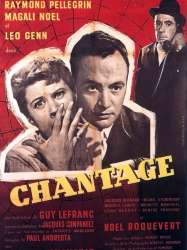
Chantage (1955)
, 1h42Réalisé par Guy Lefranc
Origine France
Genres Policier
Acteurs Raymond Pellegrin, Magali Noël, Leo Genn, Georges Chamarat, Noël Roquevert, Michel Etcheverry
Rôle Compositeur de musique originale
Note62%





Des femmes aisées sont victimes des agissements d'une bande très organisée de maîtres-chanteurs. L'une d'elle est victime d'une collision mortelle avec un camion en plein Paris. mais les mots qu'elle prononce avant de mourir ainsi qu'une lettre lui enjoignant de payer une grosse somme pour que rien ne soit révélé à son mari permettent au commissaire Bertrannet de faire arrêter Edouard Brisse, honorable restaurateur de tableaux mais aussi membre de l'organisation. Sa fille Denise, étudiante en arts plastiques, n'arrive pas à croire à la culpabilité de ce père si bon et si affectueux. Cependant, pour assurer sa survie, elle doit travailler et accepte l'offre d'un certain Kendall, un Anglais distingué, propriétaire d'une boutique d'antiquités très prisée. Elle fait la connaissance d'un voisin sympathique, Jean-Louis Tabouret et tombe amoureuse de lui, des sentiments qui ne tardent pas à être réciproques. Ce qu'elle ignore, c'est que Jean-Louis fait partie du réseau qui employait son père.

La Rage au corps (1954)
, 1h35Réalisé par Ralph Habib
Origine France
Genres Drame
Acteurs Françoise Arnoul, Raymond Pellegrin, Philippe Lemaire, Jean-Claude Pascal, André Valmy, Paul Azaïs
Rôle Compositeur de musique originale
Note60%





Une cantinière de chantier, Clara, se donne sans retenue à tous les hommes. Tonio, le seul à refuser ses avances, éveille en elle un sentiment amoureux lui faisant espérer qu'il refrénera ses sens. Ils se marient, mais, lors d'une absence professionnelle de Tonio, Clara se retrouve sous l'emprise de ses démons. Elle découvre alors l'existence d'un traitement médical soignant la nymphomanie. À la faveur d'une hospitalisation inopinée, Clara va bénéficier du traitement.
 , 1h17
, 1h17Réalisé par Georges Lautner
Origine France
Genres Comédie
Acteurs Raymond Bussières, Louis de Funès, Annette Poivre, Denise Grey, Véra Norman, Jean Ozenne
Rôle Musicien
Note51%





Avides d'argent et de gloire, Hector, Adèle et Cyprien, trois chanteurs des rues sans public, décident d'attirer l'attention sur eux en devenant des naufragés volontaires. Ils réussissent à intéresser à leur projet la famille Grossac. M. Grossac finance la construction du radeau "l'Orthodoxe" qui, parti de Saint-Tropez, échouera sur la plage voisine. Une publicité bien orchestrée leur assurera un retour triomphal à Paris où se conclut un double mariage.

Ma petite folie (1954)
, 1h38Réalisé par Maurice Labro
Origine France
Genres Comédie
Acteurs Jean Bretonnière, Jean Tissier, Roméo Carles, Jacqueline Noëlle, Geneviève Kervine, Jean Marconi
Rôle Compositeur de musique originale
Un jeune homme timide est moniteur dans une auto-école. Lors d'une leçon, il est troublé par la ravissante et capricieuse fille d'un richissime sud-américain.
 Connexion
Connexion
